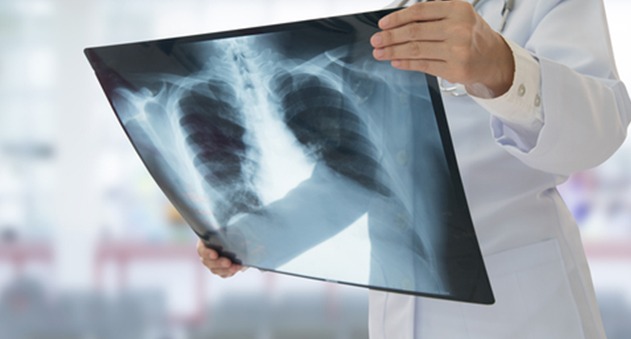What is Myotherapy?
Myotherapy is about providing optimal hands-on care and management for muscle dysfunction. It is an essential part of the health care team and can provide relief from the pain of muscle strain and injury and also relieve the tension and stress from everyday life. They provide expert assessment, treatment and management of the soft tissue structures within the body.

Myotherapy is applied in the preventative, corrective and rehabilitative phases of therapy to restore and maintain the normal integrity of the soft tissues and joint structures within the human body. This, combined with other clinical modalities such as exercise therapy restores health and mobility. A wide range of conditions can be treated from minor muscle pain to post operative rehabilitation.
Myotherapy Methods
Depending on the particular problem, the Therapist may use a combination of modalities such as:
- Soft Tissue Manipulation
- Myofascial Stretching
- Dry Needling
- Rehabilitative Exercises
- Sports Massage
- Neuromuscular Assessments
- Relaxation massage
- Myofascial Release
- Trigger point therapy
- Posture correction exercises
When can Myotherapy help?
For aches, pain or discomfort at rest or on movement (including headaches)
Those with sports or occupational induced injuries
To increase range of motion and decrease tension around joints
To restore muscle balance and improve posture
To reduce recovery time and soreness after exercise
The treatment provided by a Therapist can be complimentary to that provided by other allied health practitioners and may be used in conjunction with other forms of treatment.
Your first treatment will begin with a detailed, thorough examination of your injury/condition and how it affects you as a whole. A treatment program is then designed to give you maximum results in a minimum period of time to return you to health, activity, work and optimal function.
DRY NEEDLING
What is Dry Needling?
Dry Needling involves insertion of a fine needle into the muscle in the region of a “Trigger Point’. The aim of Dry Needling is to achieve a local twitch response to release muscle tension and encourage localized increased circulation to targeted muscles tendons and bone structures. Dry needling is an effective treatment for chronic pain of neuropathic origin with very few side effects.
This technique is unequalled in finding and eliminating neuromuscular dysfunction that leads to pain and functional deficits.


The needle used is very thin and most subjects do not even feel it penetrate the skin. A healthy muscle feels very little discomfort with insertion of this needle. However if the muscle is sensitive and shortened or has active trigger points within it, the subject will feel a sensation like a muscle cramp -’the twitch response’. The patient also may feel a reproduction of their pain, which is a helpful diagnostic indicator for the practitioner attempting to diagnose the cause of the patient’s symptoms. Patients soon learn to recognize and even welcome this sensation as it results in deactivating the trigger point, reducing pain and restoring normal length function to the involved muscle. With needle insertion it specifically increases natural healing phase of the body to a targeted area. This is done by increasing circulation of white blood cells leukocytes myocytes and natural endorphins to the impacted area. This incredibly effective technique causes very little discomfort for the patient and the results are often amazing when used in conjunction with traditional Myotherapy techniques.
However, you should not confuse dry needling with acupuncture as they are actually two different things. Acupuncture uses points that lie along the body’s meridians or energy channels, while myofascial dry needling uses points that are defined by western based anatomy and physiology.
It is a safe and effective method of treatment that can alter the pain threshold and pain perception in the acute and chronic stages of injury. With dry needling we can help to reduce healing time and promote relief of pain and soreness no matter how long the issue has been at hand.
Problems that can be helped with dry needling
- Chronic back or neck pain
- Migraines and headaches
- Repetitive strain injuries
- Work related injuries
- Motor vehicle injuries.
- Sports injuries
What is Cupping?
This therapy helps increase circulation, relieves pain, removes toxins and allows the body to feel free and rested. The technique uses a suction force created in small cup created by heating the air within the cup, then placed on the body to draw tight tissue upward into the cup.
Blood flow in the selected region is increased and a stretch is applied to the surrounding tissue to facilitate better tissue condition and improved healing.


There are two kinds of cupping techniques. The first is termed as the “sliding cupping” wherein the cups are moved around the desired area to provide relief to sore and affected tissues. The second technique is “Stationery Cupping” where the cups are placed on a specific pressure point and not removed until the desired time has elapsed.
During the cupping session you might experience a unique suction and after the cups are removed you notice red spots on your skin that may turn into superficial bruising due to the localized increase of circulation. You will also feel light and sense a feeling of suppleness in their joints. A cupping session improves blood circulation and this in turn enhances the healing process. After a while, your aching muscles and sore tendons would start to feel agile and you would be able to return back to your normal self. If you continue this form of treatment then your overall flexibility is bound to increase and you would feel stress free and relieved.









